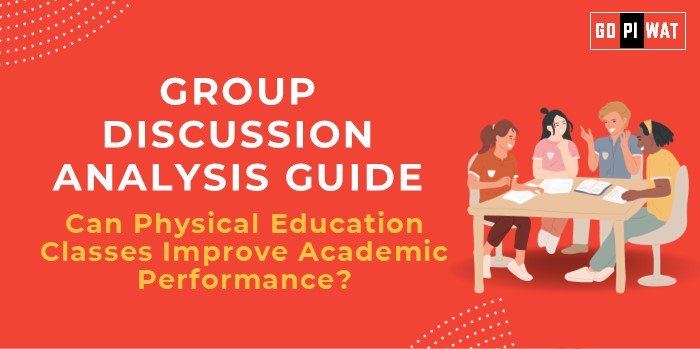📋 Group Discussion Analysis Guide: Can Physical Education Classes Improve Academic Performance?
🌟 Introduction to the Topic
- 📚 Opening Context: “With increasing focus on holistic education, physical education (PE) emerges as a critical contributor to overall academic success.”
- 📜 Background: Discussions on the relationship between physical activity and academic performance date back decades, supported by neuroscience and educational studies. Globally, countries like Finland integrate daily PE classes into school curricula with notable success.
📊 Quick Facts and Key Statistics
- 📈 PE & Academic Outcomes: Studies show a 20% improvement in student performance due to regular physical activity (CDC, 2023).
- 🌍 Global Benchmarks: Finland mandates daily PE, ranking top in PISA global education assessments.
- 💡 Health-Academic Connection: Regular exercise improves concentration and cognitive function, reducing absenteeism by 15% (WHO, 2022).
- 🇮🇳 Implementation in India: Only 30% of Indian schools provide structured PE classes (NCERT, 2023).
🤝 Stakeholders and Their Roles
- 🏛️ Governments: Policy formulation and infrastructure investment for PE in schools.
- 🏫 Educational Institutions: Designing balanced curricula integrating physical and academic goals.
- 👨👩👧👦 Students and Parents: Advocating for balanced development.
- 🌐 NGOs and Global Agencies: Campaigns for PE importance and funding support.
🏆 Achievements and Challenges
🎯 Achievements:
- ✨ Improved attention spans among students with daily PE sessions (Harvard Research, 2022).
- 🎉 Increased participation in extracurricular activities boosting self-esteem.
- 💪 Reduced rates of obesity and associated health problems, enabling better school attendance.
⚠️ Challenges:
- 🏗️ Lack of infrastructure and trained PE teachers in rural schools.
- 📚 Socio-cultural bias prioritizing academics over physical activity.
- 💰 Budgetary constraints in implementing daily PE programs.
🌍 Global Comparisons:
Countries like Finland and Sweden successfully demonstrate the synergy between PE and academic success, unlike underfunded or inconsistent models in developing countries.
📄 Case Studies:
Kerala, India, introduced mandatory PE classes in primary schools, reporting a 12% improvement in academic test scores.
💬 Structured Arguments for Discussion
- ✔️ Supporting Stance: “Physical education not only boosts health but also enhances cognitive functions, memory, and classroom behavior.”
- ❌ Opposing Stance: “Prioritizing PE might detract from academic focus, especially in resource-limited schools.”
- ⚖️ Balanced Perspective: “While PE is vital for holistic development, its integration must balance academic rigor and infrastructural realities.”
📈 Effective Discussion Approaches
- 📝 Opening Approaches: Start with a data-driven insight or case study (e.g., “Finland’s education model highlights…”).
- 💡 Counter-Argument Handling: Acknowledge constraints but propose solutions like hybrid academic-PE models.
🔎 SWOT Analysis
• Strengths: Improves cognitive health, teamwork, and discipline.
• Weaknesses: Resource allocation challenges.
• Opportunities: Policy integration and global collaboration.
• Threats: Societal bias and budget cuts.
🎓 Connecting with B-School Applications
• Applications: Strategic planning for resource allocation in educational projects.
• Sample Questions:
- 📌 “How can PE be balanced with academic priorities?”
- 📌 “Discuss PE’s role in fostering leadership and teamwork.”
• Insights: PE’s role in reducing stress is key for corporate leadership skills.


